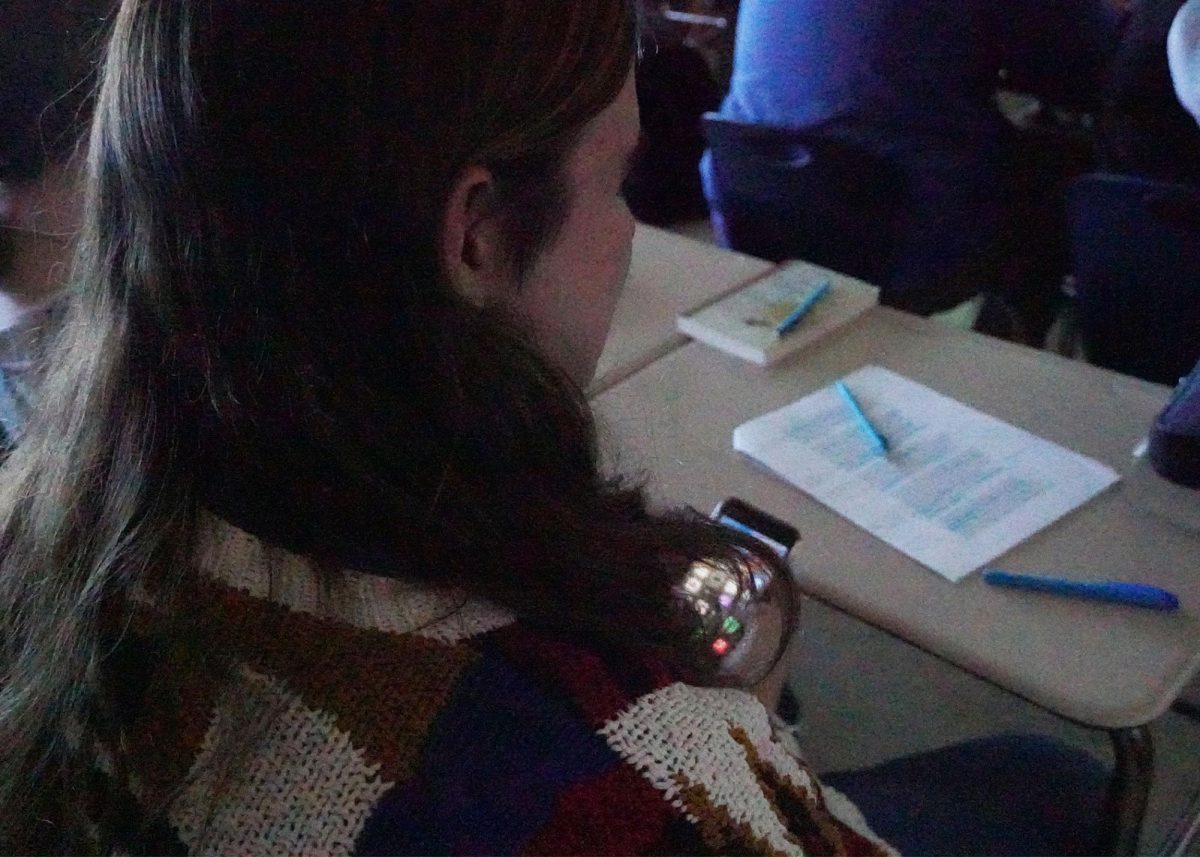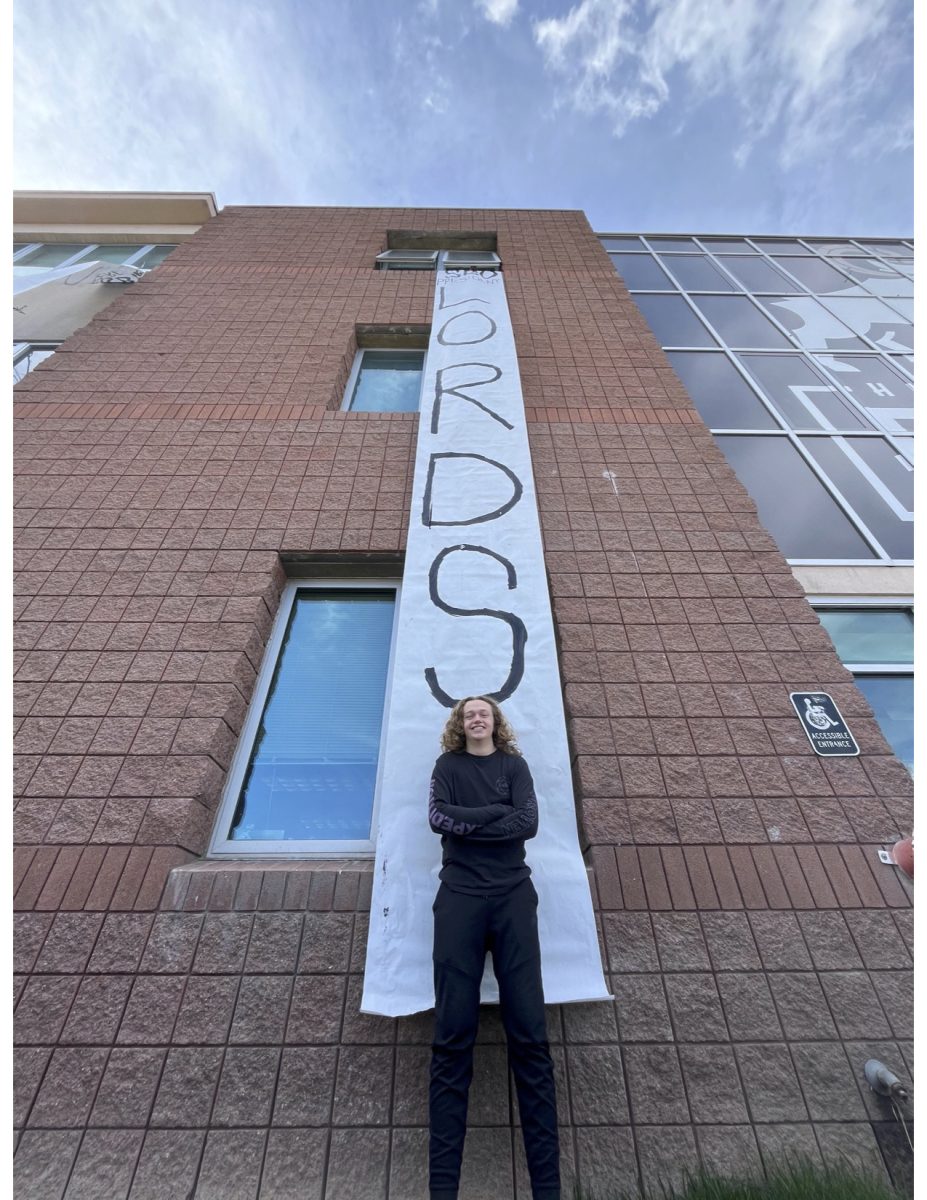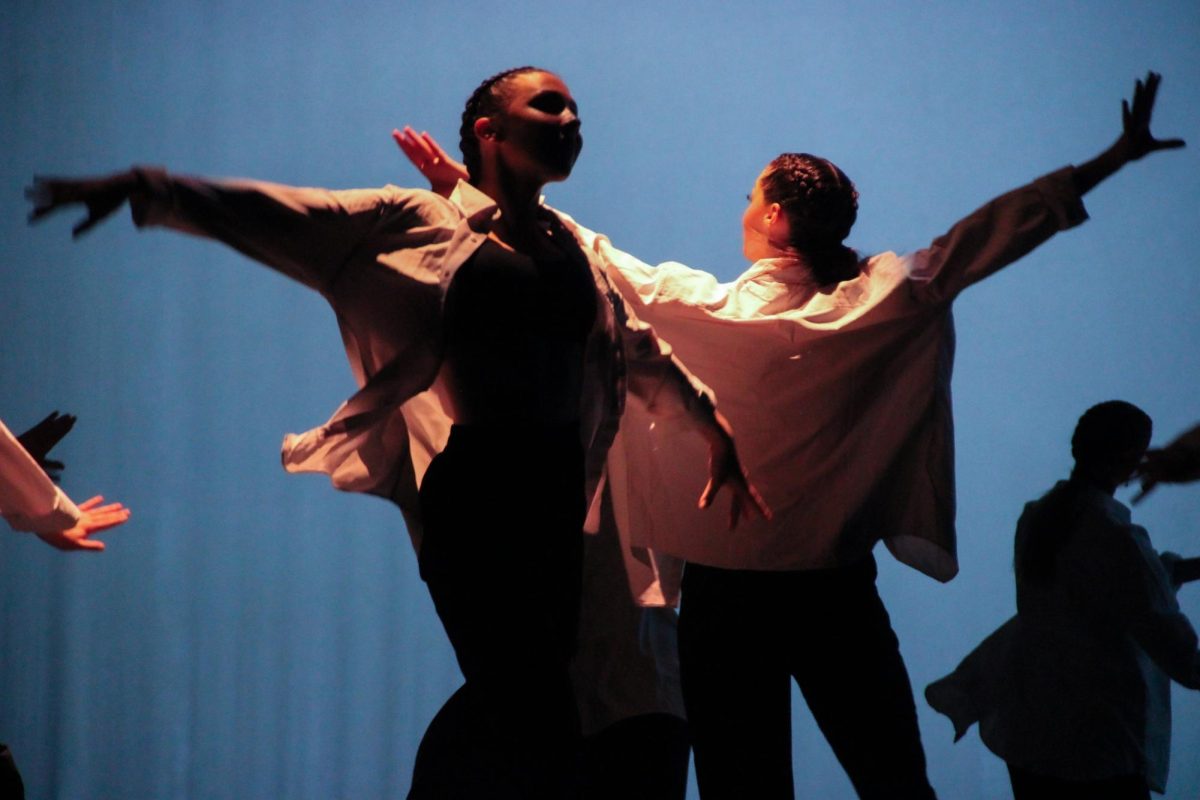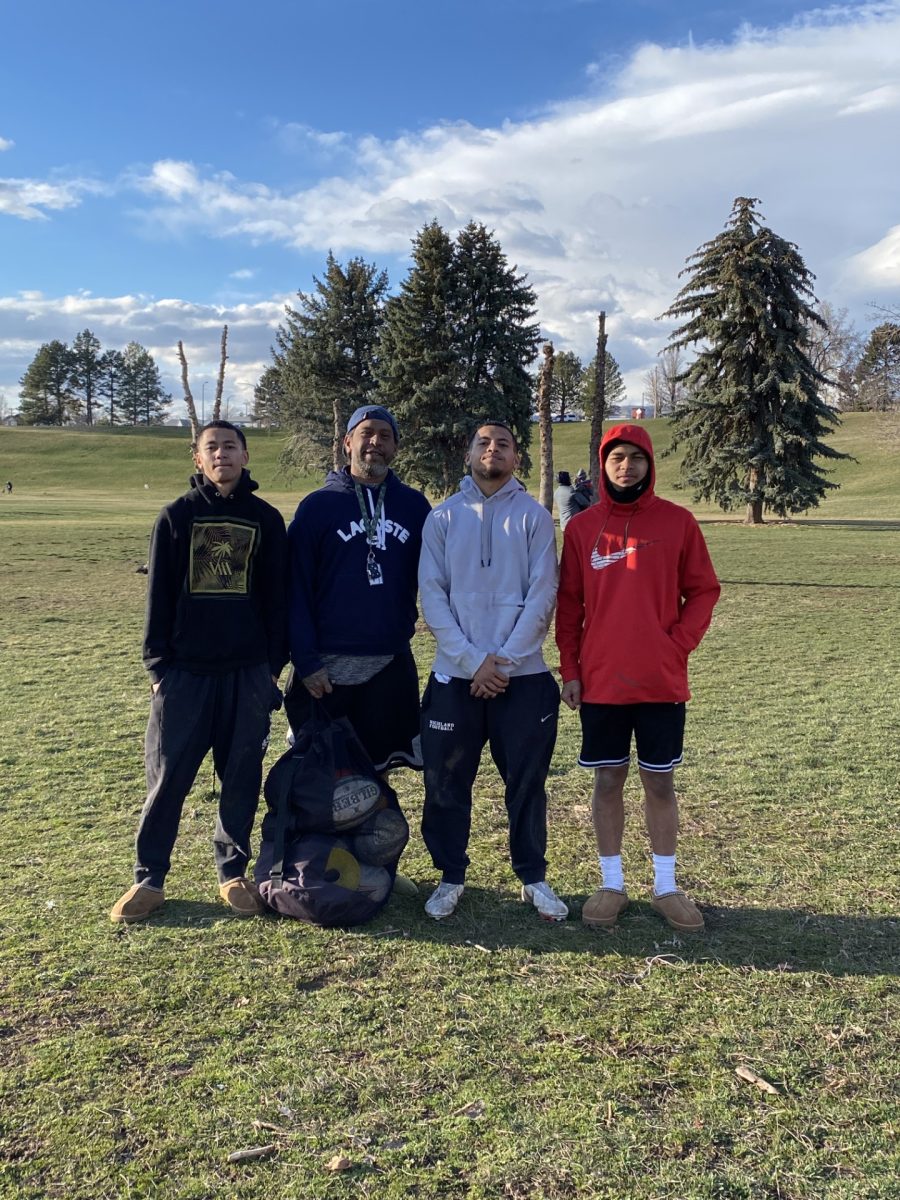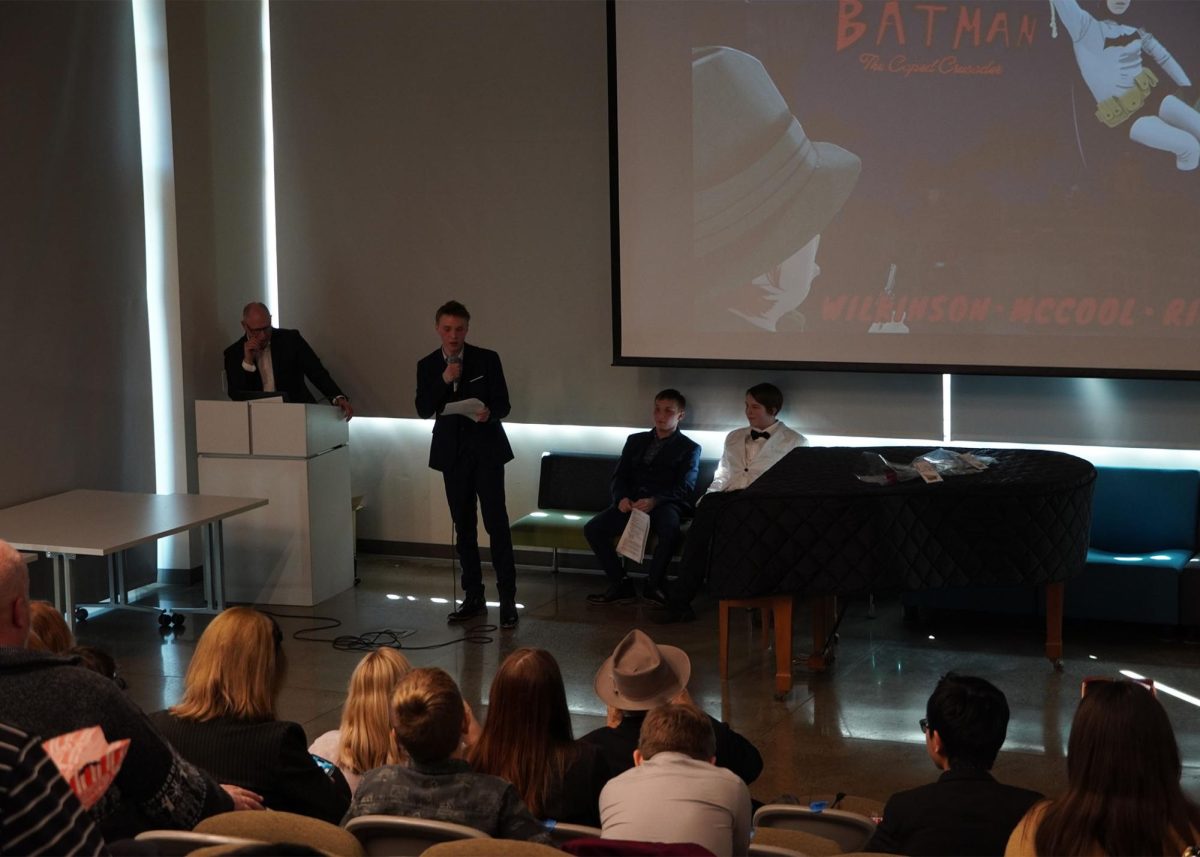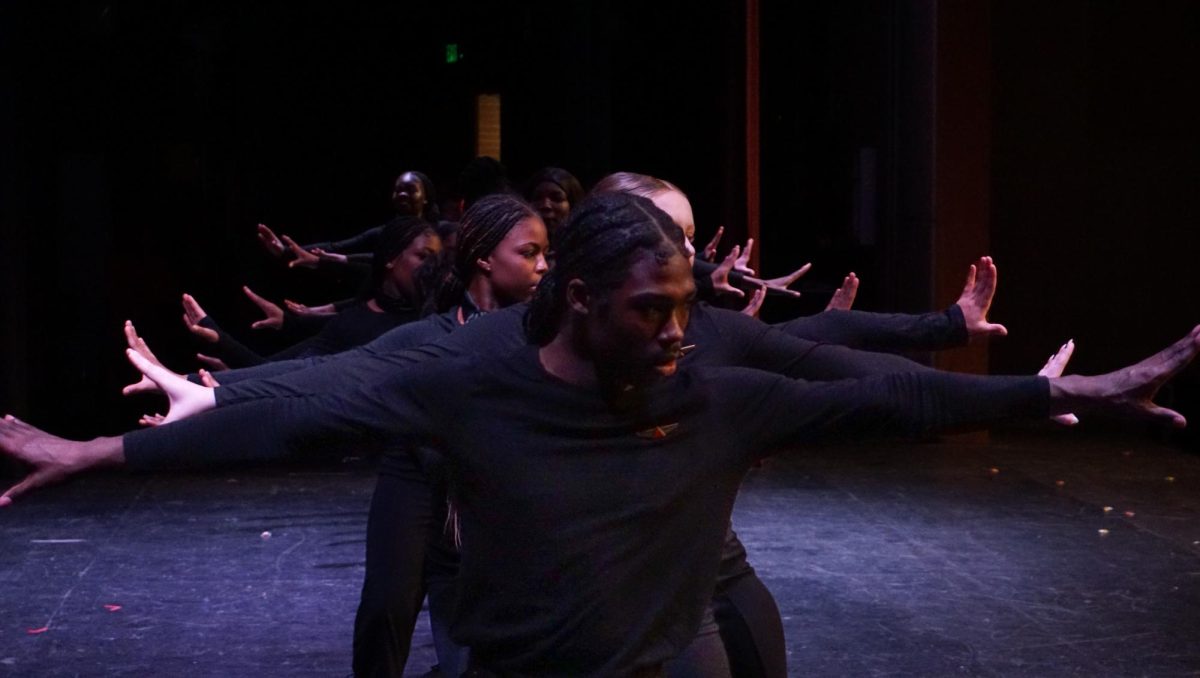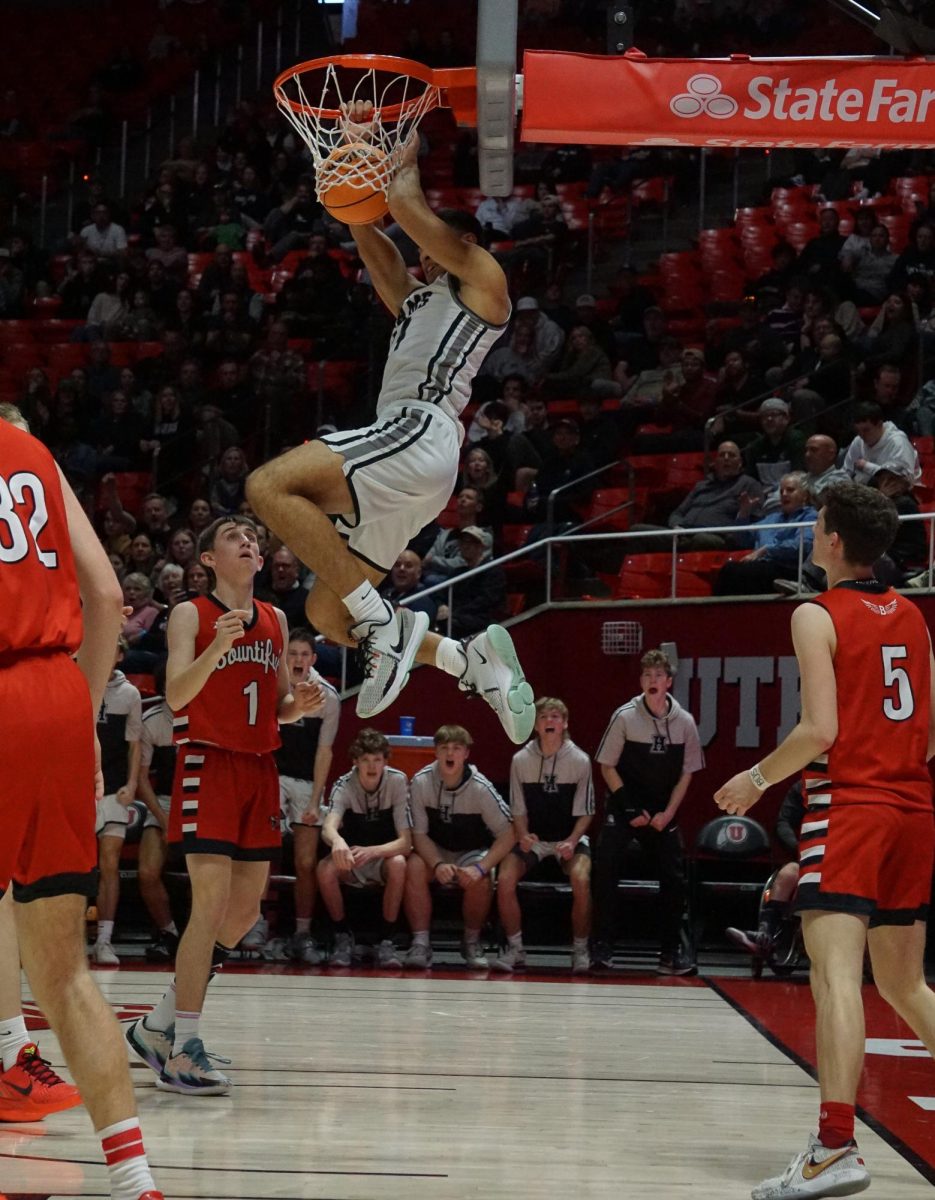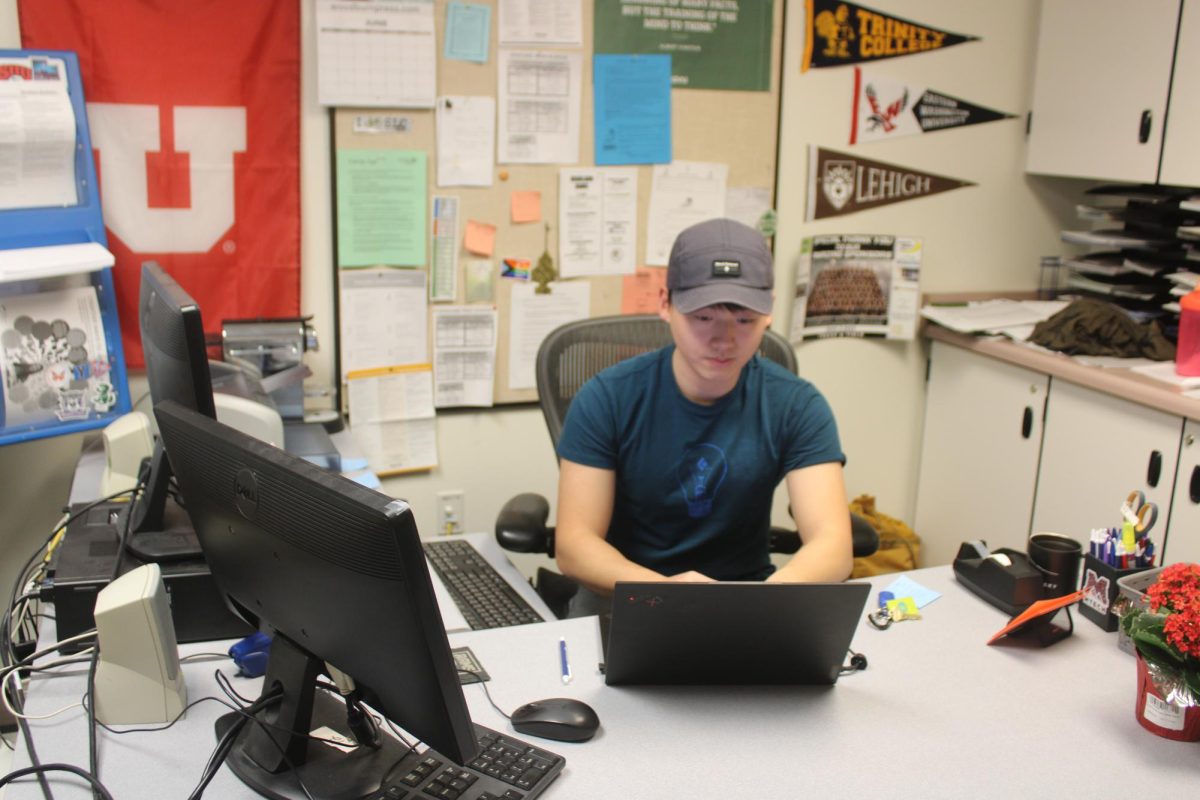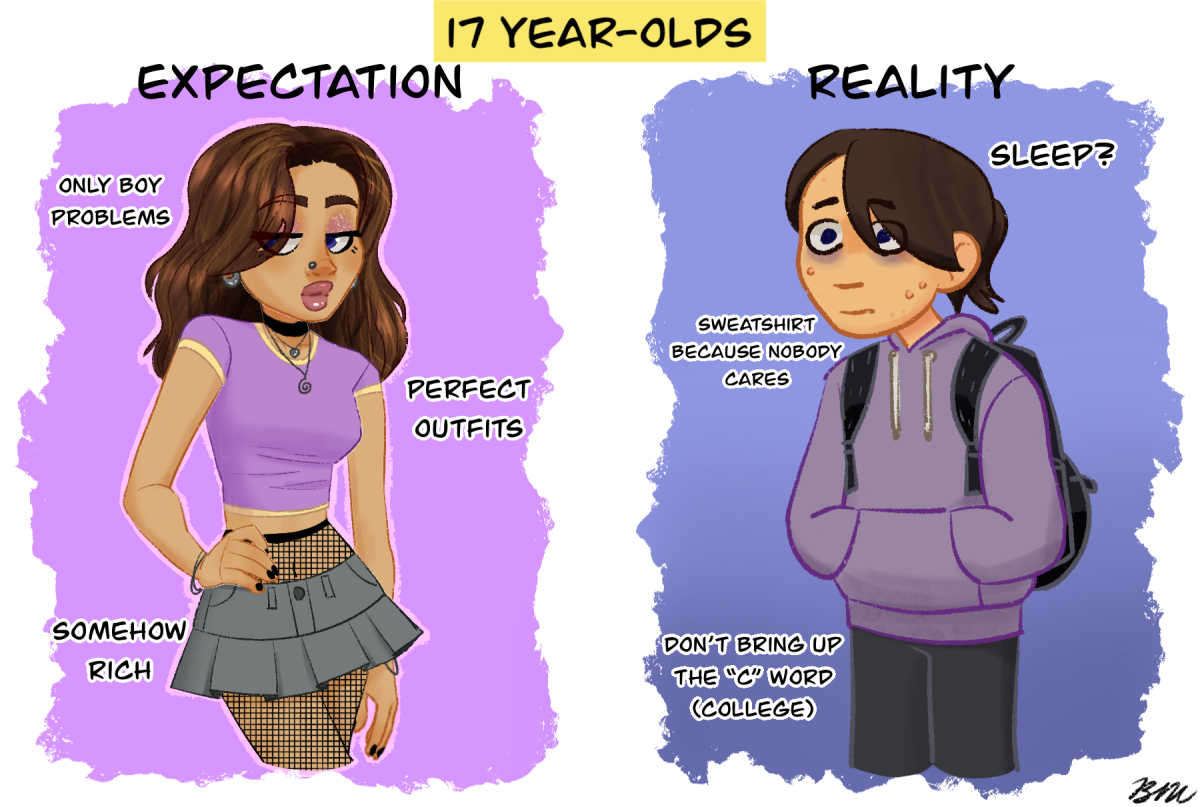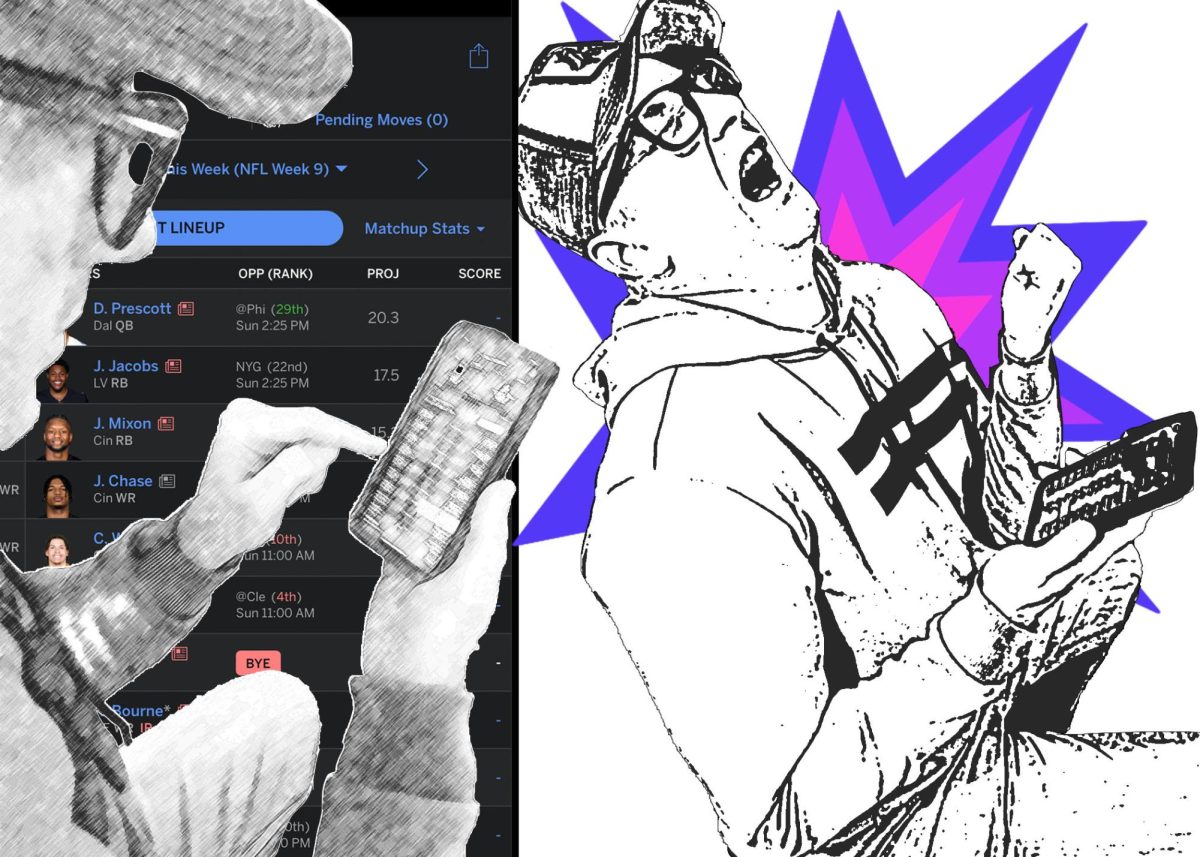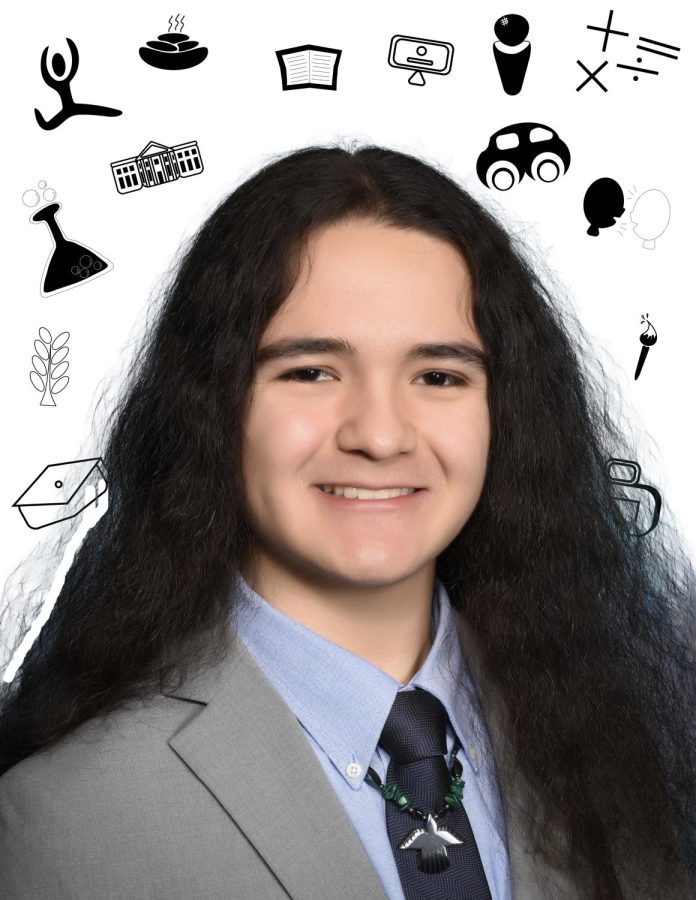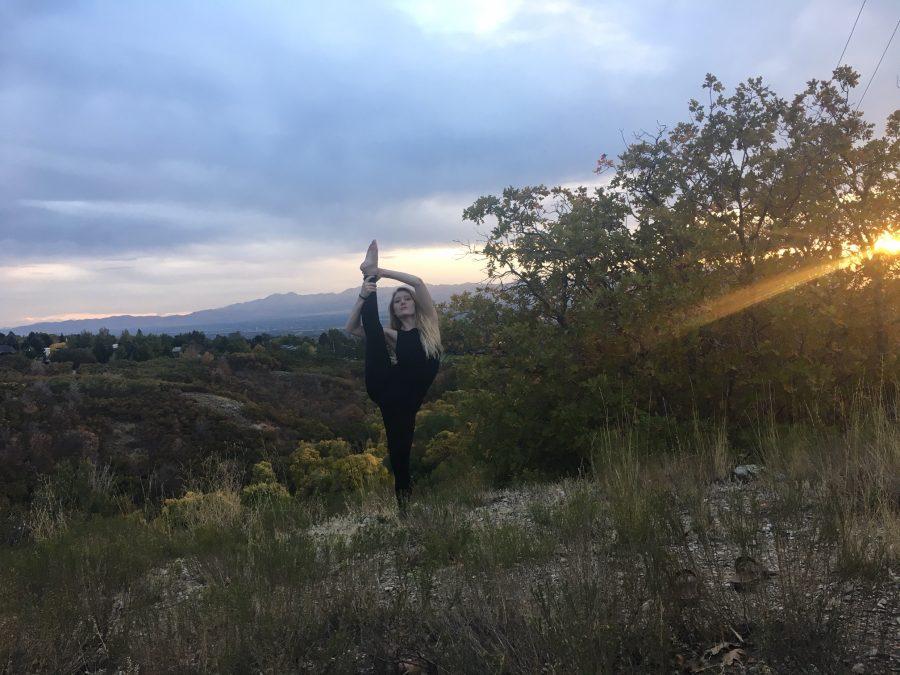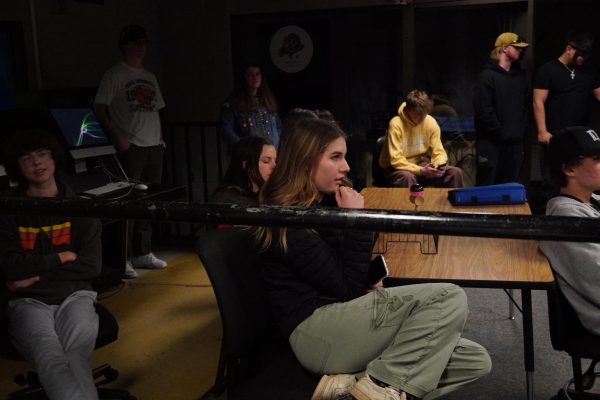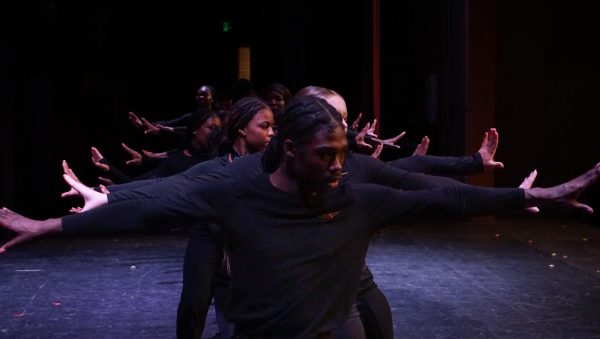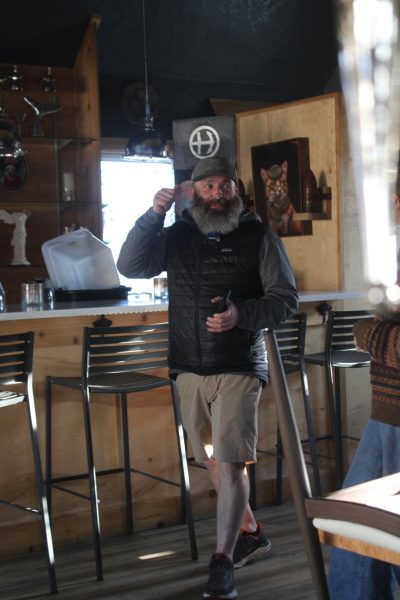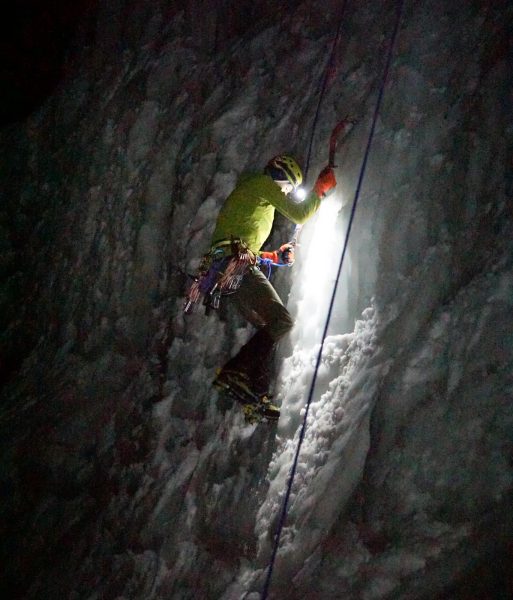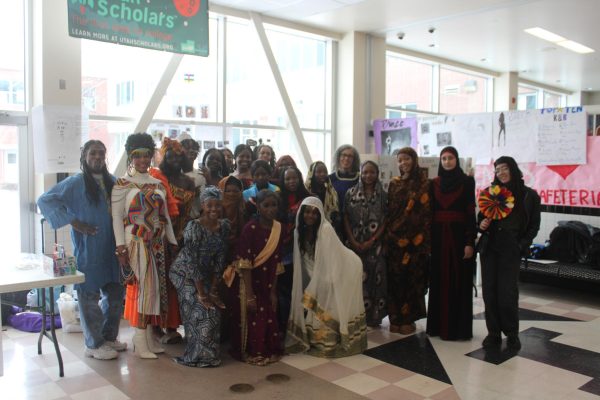Skarda “Turns” Towards Dance, Despite Trials
Skarda does a leg hold on one of her favorite trails.
November 29, 2016
Anikah Skarda stands at the head of the formation that contains 23 girls. As the music starts blaring a familiar fear washes over her. A fear that is not one that simply nags at the back of one’s mind of what could happen. It is the dread that washes over oneself when they know the probability of something unpleasant is almost certain. She takes a deep breath in anticipation of the pain and sets her face determinedly. Within the first movement her knee has dislocated and she is sprawled on the floor of the dance room. Dance Company is performing for the football halftime in two minutes and Skarda needs to once again overcome the pain that would stop many from dancing. But that’s not Skarda. As a dancer familiar with pain she knows that because she loves dancing so much that when she commits she has no intention of backing out.
Skarda started dancing at age 13. For most people, dance is not something easily acquired but Skarda was the exception. While it takes many people years of training and classes to master techniques, Skarda’s determination helped her to excel quickly. With a knack for flexibility and jazz technique Skarda was chosen as one of four girls to enter Highland Dance Company. While this of itself is a great feat full of determination, her resolve continued to grow. Skarda’s knee started dislocating, once or twice a month at first until it happened weekly. And those were just on weeks of moderate activity. On weeks like dance concert her knee will dislocate multiple times in one night.
Many people would think that Skarda’s pain would stop there—and they’d be wrong. About two years ago the dancer noticed a growth on her foot. The growth was soon diagnosed as a tumor.
“When I found out about the tumor, I just thought it was gross. I wasn’t too scared about it being cancerous, though I don’t quite know why. I am just glad that it turned out to be benign,” Skarda says.
While the tumor was not only an “eyesore” as Skarda describes it, it was also annoying and, at times, extremely painful. Many of her dance peers attest to times of seeing Skarda grimace in pain, whether because of her knee or because of her foot was not determined. But after grimacing Skarda would fix her jaw and keep dancing.
When asked about how Skarda continues pushing herself through the pain she answered, “Because I love it. I love how dance allows me to combine my passions of music and art into one. Dance is visual music and physical art.”
Skarda finds dance to be an emotional outlet that is worth it’s cost. As someone who is proud to be peculiar Skarda has developed her own style—one that is completely different from her peers.
“Anikah is, by far, the most unique dancer I know. She is so innovative with her movement. You would never find her creating movement that has been seen before. She draws people in with her distinctive movement. Everyone already knew that she was a great dancer but the whole company was blown away when she choreographed an amazing piece for concert last spring. She is way more than meets the eye,” Friend, and peer, Katie Olsen said.
Beyond being an excellent dancer and choreographer, Skarda also excels as a Dance Company officer.
“Anikah has really taken initiative this year as an officer by maintaining unity and positivity among the dancers. She spotlights each company member on their birthdays and makes sure each girl feels recognized. She is also a beautiful and graceful performer; and her choreography illustrates a unique and abstract artistry that comes alive on stage,” Dance Company Adviser and mentor Erin Patrick said.
While Skarda continues to feel pain, she finds that the reward justifies the means. Some people are physically predisposed to be a good dancer; some people have the heart and passion to dance. Skarda combines the two in a unique and beautiful way.
